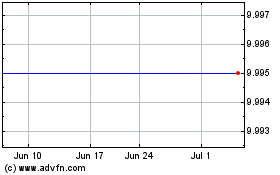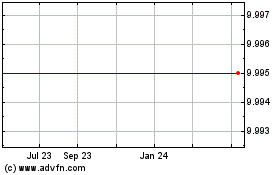Most K-12 Teachers Believe Personal Tech Devices Can Link Learning to Real-World Activities, Finds National University of Pho...
June 24 2015 - 1:35PM
Business Wire
Teachers Share the Ways They Use Tech in the
Classroom, and Educator Shares Tech Tips for Parents to Help
Children Avoid the Summer Learning Slide
A recent national survey from University of Phoenix® College of
Education finds that more than nine in ten (93 percent) K-12
teachers believe personal tech devices can link classroom learning
to real-world activities and 89 percent expect they will be used in
most classrooms in the next five years. The survey of more than
1,000 K-12 teachers across the country was conducted online by
Harris Poll in April on behalf of University of Phoenix College of
Education.
Educators today are integrating technology into curriculum and
their classrooms in many ways.
- Seventy-nine percent of K-12 teachers
have allowed students to research subjects using the Internet in
class.
- Sixty-two percent have used games and
simulations to aid learning.
- Nearly half (49 percent) have used
web-based tools to help students improve writing and comprehension
skills.
- More than one-third (36 percent) have
allowed students to use tools to produce their own video
content.
- One in five (20 percent) have used
clickers* to keep students engaged. The same percentage have used
wikis, blogs or social media to spur student dialogue.
- Fifteen percent have used technology to
connect their students to students in another school, city, state
or country.
- More than one in ten (11 percent) have
brought in experts via Skype or other technology who otherwise
would not have been able to join their classes.
“In many ways, technology is tearing down classroom walls and
helping educators bring new content and experts into their
curriculum,” said Kathy Cook, Dean of Technology for University of
Phoenix College of Education. “Today’s teachers are increasingly
tech-savvy in both their personal and professional lives and are
enthusiastic about using technology to keep students engaged and
excited about learning.”
Technology can help parents build on the momentum created in the
classroom. According to Cook, teachers and parents are often
concerned that students may lose significant knowledge from the
previous school year during the summer months. This is often
referred to as the Summer Learning Slide.
“Technology is part of students’ lives on a daily basis, so
using a variety of digital tools can promote and make learning fun
inside and outside of the classroom,” said Cook. “Using digital
tools during the summer can also improve children’s and parents’
tech skills.”
Cook recommends the following tips to create tech-inspired
summer learning opportunities:
- Take a “virtual” summer
vacation. Have your children research a place they would like
to visit and build an interactive presentation. There are many free
student-friendly software programs and apps available to build
multimedia presentations. Exploring the options can be part of the
fun.
- Turn a trip to the museum, a local
event or a backyard adventure into a presentation and brag
book. Have your child use a digital camera to capture an
everyday or special activity and then conduct research online based
on the photos. It can be something as simple as researching an
insect or a tree that is common in your backyard. Then the child
can share his or her new knowledge by creating a multimedia
presentation or digital poster, which can serve as a digital brag
book for family members.
- Map your trip to teach your
child more about geography. Use Google Earth to chart your summer
road trip and use math skills to calculate mileage and
expenses.
- Keep kids moving with tech. Much
of today’s entertainment is device-driven, but you can also use
personal devices to encourage physical activity through the use of
age-appropriate apps. Make it a friendly competition among your
family to track who stays the most active this summer.
- Turn "couch potato" into "smart
cookie" time. For every 30 minutes your child spends watching
TV or playing games on computers, tablets, phones or video
consoles, have them match that time with 30 minutes of an
educational game. There are many free websites and apps that offer
educational games for kids of all ages.
- Give your children a virtual piggy
bank. There are several apps that teach children valuable
lessons about saving money, budgeting and setting financial
goals.
- Encourage them to read! One of
the best activities students can do over the summer to prevent the
summer learning slide is read. Load a mobile device with children’s
books to keep your child engaged on the go. There are many
interactive books available through apps that can interest children
in reading and interacting with content.
For more information about University of Phoenix® College of
Education degree programs, visit www.phoenix.edu/education.
Survey Methodology
This survey was conducted online within the United States by
Harris Poll on behalf of University of Phoenix between April 14 and
27, 2015. Respondents included 1,002 U.S. residents employed
full-time as teachers in grades K-12 who have at least an
undergraduate degree. For complete survey methodology, including
weighting variables, please contact Tanya Burden at
tanya.burden@apollo.edu.
About University of Phoenix® College of Education
University of Phoenix College of Education has been educating
teachers and school administrators for more than 30 years. The
College of Education provides associate, bachelor’s, and master’s
degree programs for individuals who want to become teachers or
current educators and administrators seeking advanced degrees to
strengthen their professional knowledge. With education programs
available throughout most of the U.S., the College of Education has
a distinct grasp of the national education picture and priorities
for teacher preparation. Faculty members on average bring more than
17 years of professional experience to the classroom. For more
information, visit www.phoenix.edu/education.
About University of Phoenix
University of Phoenix is constantly innovating to help working
adults move efficiently from education to careers in a rapidly
changing world. Flexible schedules, relevant and engaging courses,
and interactive learning can help students more effectively pursue
career and personal aspirations while balancing their busy lives.
As a subsidiary of Apollo Education Group, Inc. (Nasdaq: APOL),
University of Phoenix serves a diverse student population, offering
associate, bachelor’s, master’s and doctoral degree programs from
campuses and learning centers across the U.S. as well as online
throughout the world. For more information, visit
www.phoenix.edu.
*Clickers are audience response systems that quickly capture
answers from all participants and are often used for polling or to
determine comprehension.
View source
version on businesswire.com: http://www.businesswire.com/news/home/20150624006223/en/
University of PhoenixTanya Burden,
303-570-0617tanya.burden@apollo.edu
Apollo Education Group, Inc. (NASDAQ:APOL)
Historical Stock Chart
From Mar 2024 to Apr 2024

Apollo Education Group, Inc. (NASDAQ:APOL)
Historical Stock Chart
From Apr 2023 to Apr 2024
